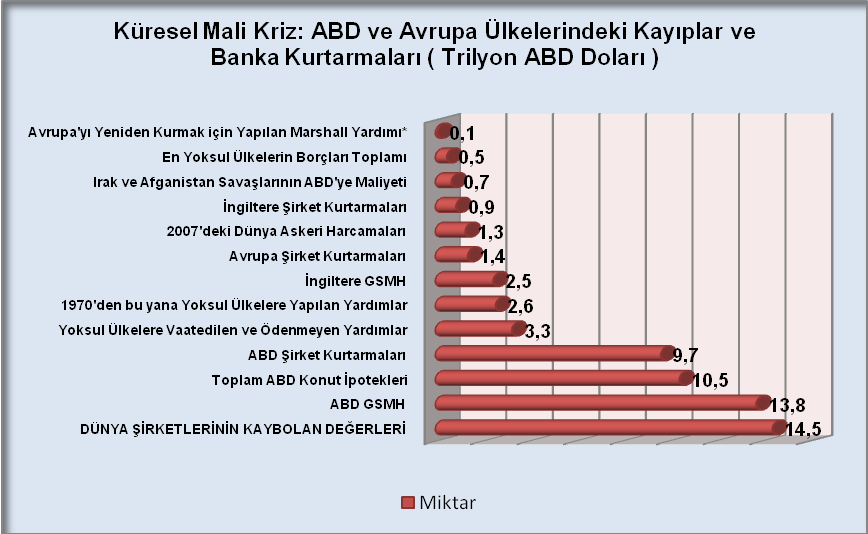MAJOR DEPRESSIVE DISORDER IN ADOLESCENCE A CASE STUDY
FESTA MAJOR PALAFRUGELL 2010 DIUMENGE 11 DEGOVERNMENT RESPONSE CONSULTATION ON MAJOR INFRASTRUCTURE PLANNING REFORM
Tomás Kismajor Traductor Reconocido por la Autoridad
(TITLE) (FULL NAME) (THESISDISSERTATIONMAJOR PAPER REPORT) SUBMITTED TO THE
1 OLD MAJOR 2 KARL MARX 1 OLD RESPECTED
1 PROGRAM TITLE DOUBLE MAJOR IN CHINESE AND ENGLISH
Lynda is a 16 year old, white female who was admitted to Bradley Hospital on 10/3/00 after a phonce call by a school official
Major Depressive Disorder in Adolescence: a case study
Deepa Sekhar
Biomed 278
11/14/00
Lynda is a 16 year-old, white female admitted to Bradley Hospital on 10/3/00 because of active suicidal ideations manifested by holding a knife to her arm that morning. This was accompanied by thoughts of hanging herself by wrapping a telephone cord around her neck. Lynda has a history of suicidal ideation and has tried to cut herself in the past, but reported that the knife would not penetrate her skin. She was concerned that she would not be able to stop herself again.
In 1994, suicide among prepubertal children and young adolescents (5-14 years) in the United States involved approximately 322 deaths, and suicide among adolescents (15-24 years) involved approximately 4956 deaths. Thus, the risk of suicide rises substantially at puberty (1). Suicidal behavior is strongly associated with major depressive disorder or dysthymia, disruptive disorder, oppositional defiant disorder, conduct disorder, schizophrenia and developmental disorder. There is also a strong correlation between substance abuse and suicide among adolescents, but in this case, Lynda denied any substance abuse history (1).
Lynda reported depression for the past 2 years and an obsession with death since 8th grade. She is an obese female who appeared sad, making poor eye contact and demonstrating poor social skills. Her affect was flat and apathetic. Lynda reported difficulty sleeping, decreased energy, irritable mood and trouble with her appetite. She also reported significant feelings of worthlessness, helplessness and hopelessness. These include five of the symptoms which must be present during at least a 2-week period to diagnose a major depressive episode (2).
Major depressive disorder (MDD) is estimated to have a prevalence of 2% in children and 4-8% in adolescents. Though it presents in equal numbers in males and females in childhood, the male:female ratio is 1:2 in adolescence (3). MDD is frequently comorbid with dsythymic disorder (DD), a state of chronic depression which occurs for more of the day, or more days than not, in children for at least 1 year (3). This is significant because if DD occurs before 21 years of age (early onset), an individual is more likely to develop subsequent major depressive episodes (2).
In addition to the above symptoms, Lynda spoke about her imaginary friends, which she has had since 6 years of age. The characters are from television and movies, and she acts out their voices and argues with them. She recognizes that they are not real, but she will avoid her friends to spend time with her imaginary ones. She reported one auditory hallucination, a week before her admission, as a voice telling her to get out of bed to feel better.
These symptoms suggest psychotic depression, which is MDD accompanied by mood congruent or incongruent hallucinations. In adolescence these may be auditory hallucinations and delusions. Patients presenting with psychotic depression typically have more severe depression, greater long-term morbidity, increased resistance to antidepressant monotherapy, low placebo response, increased risk of developing bipolar disorder, and a family history of bipolar and psychotic depression (3).
Environmental factors are also linked to MDD (3). Lynda related that her depression had worsened in the past 2 weeks because her sister was living at home again. Her sister is abusive towards her (she started choking Lynda for using her television), and Lynda believes her mother does not punish her sister appropriately.
Lynda’s parents are divorced. Her mother is a victim of domestic violence, and her father is an alcoholic. Also, her aunt is in an institution, and her cousin has tried to commit suicide. Children with at least one depressed parent have a three times greater risk of development of MDD, compared with a child with non-depressed parents. Parents of depressed children also tend to have higher rates of other psychiatric disorders such as anxiety, substance use and personality disorders (3). There is a prevalence of 30-50% of depression in first-degree relatives of depressed children (3).
Lynda was diagnosed at Bradley hospital with Axis I: Major Depressive Disorder Recurrent Severe with Psychotic Features and Axis V: GAF current 35 (highest in the past year 75). Axis II was not mentioned, but a learning disability was noted in her chart. She has asthma for which she takes albuterol, but this was not significant for classification under Axis III. Finally, though it was not mentioned, I believe she has several psychosocial and environmental problems based on the above information, which could be included in Axis IV.
Additionally , Lynda was given the diagnoses of psychotic disorder - not otherwise specified, schizophrenia probability disorder, and dysthymia. As mentioned above, DD is frequently comorbid with MDD. Schizophrenia is difficult to diagnose in childhood (4). It has been suggested that auditory hallucinations, delusions, and irrational or magical thinking are important diagnostic features (4). Lynda mentioned an interest in witchcraft, and she appeared for her interview dressed in black with her fingernails painted black as well. Schizophrenia in adolescents may have an insidious onset with apathy, a change in hygiene and withdrawal (5). Lynda’s chart indicated poor self care; she was not showering. In addition, schizophrenia may coexist with learning disabilities, mental retardation, conduct disorder and autism (4). Lynda has been diagnosed with a learning disability. However, her imaginary friends are not really hallucinations as she actively makes their voices. She has reported a single auditory hallucination. There is not enough information for a clear diagnosis, which is common in the early stages of the disease (2).
Antidepressant treatment was recommend for Lynda, but her parents refused. They consented to close follow-up for their daughter. There has been little research on treatment of MDD in children, so most treatment, efficacy and safety data are extrapolated from adults (3). Antidepressants may be indicated for children and adolescents with non-rapid-cycling bipolar depression, psychotic depression, and depression with symptoms that are unresponsive or preclude the use of psychotherapy. Selective serotonin reuptake inhibitors are recommended because of their safety, side effects profile, ease of administration and suitability for long-term treatment. However, pharmacotherapy cannot be used alone because even with a stabilization of the patient’s mood, the environmental and social problems remain. Parents should also be counseled to effectively manage their child’s problems, and if indicated, parents should be offered treatment themselves (3).
Lynda presents with a complex case exhibiting many of the risk factors and complications of childhood MDD. Since her family has refused medication, it is especially important that she receive adequate counseling along with their support to overcome her illness. Continued research into the treatment of childhood depression is important, especially as the medical community continues to recognize depression earlier in children.
References
1. Pfeffer CR. “Childhood Suicidal Behavior: A Developmental Perspective.” Psychiatric Clinics of North America. 1997 Sept; 20(3):551-62.
2. American Psychiatric Association. Diagnostic and Statistical Manual of Mental Disorders, 4th Edition. Washington, DC. American Psychiatric Association, 2000.
3. “Practice Parameters for the Assessment and Treatment of Children and Adolescents With Depressive Disorders.” Journal of the American Academy of Child and Adolescent Psychiatry. 1998 Oct; 37(10 Supplement):63S-83S.
4. Volkmar FR. “Childhood and Adolescent Psychosis: A Review of the Past 10 Years.” Journal of the American Academy of Child and Adolescent Psychiatry. 1996; 35:843-51.
5. Andreasen NC and DW Black. Introductory Textbook of Psychiatry, 2nd Edition. Washington, DC. American Psychiatric Press, Inc., 1995.
14501750 EARLY MODERN PERIOD BRYANT MAJOR DEVELOPMENTS I QUESTIONS
18 MAJOR CLASSIFICATION BIOLOGICAL SCIENCES MINOR CLASSIFICATION PSYCHOLOGY NEWBORN
2 INTERNATIONAL AFFAIRS MAJOR INTERNATIONAL POLITICAL ECONOMY EMPHASIS TOTAL
Tags: adolescence (3)., in adolescence, depressive, disorder, major, adolescence, study
- 1 – 4 KLASIŲ PAMOKŲ TVARKARAŠTIS 20202021 M M
- ATTESTATION DE DOMICILIATION EN APPLICATION DE L’ARTICLE L123111 DU
- CONTRACTUL COLECTIV DE MUNCĂ NEGOCIEREA CONTRACTULUI COLECTIV LA NIVEL
- KURS EMC — ØVING 7 LÆRER PETTER BRÆKKEN
- NATIONAL SPORT ORGANISATIONS AND PROFESSIONAL CLUBS CORONAVIRUS (COVID19) SHORTTERM
- DECLARACION TRIMESTRAL MODELO ……………………… EJERCICIO ………… PERIODO …
- IN THE CIRCUIT COURT OF THE 11TH JUDICIAL CIRCUIT
- 1 STATUTÁRNÍ MĚSTO KLADNO SE SÍDLEM NÁMSTAROSTY PAVLA 44
- ZAPISNIK RODITELJSKOG SASTANKA 3B 4AB RAZREDA RODITELJSKI SASTANAK JE
- PLAN DE ACCIÓN DE PAÍS PARA LA IMPLEMENTACIÓN DE
- AKTIVITÄTEN ZUM UMWELTTAG 2009 DER NATURFREUNDE ÖSTERREICH AUF DIE
- THE DIOCESE OF SAN DIEGO GUIDELINES FOR EPISCOPAL VISITATIONS
- NAZIV IN NASLOV UPRAVLJAVCA ZAHTEVA ZA SEZNANITEV Z
- HIGHLIGHTS OF THE 200910 EXECUTIVE BUDGET RECOMMENDATIONS (COMPARED
- PRIVACYVERKLARING NAAM PRAKTIJK TANDARTSENPRAKTIJK WILLEMSKADE BV ADRES WILLEMSKADE 19
- i Nstituto Educación Superior Tecnológico Público “nueva Esperanza” Silabus
- RTR – POSTOPKI IZMENJAVE PODATKOV S PONUDNIKI PLAČILNIH STORITEV
- ALMINARTORRE D LAS MEZKITAS CANECILLOSOPORTA LA CARGA DSD LA
- RESOLUCION NO 254 DE HOJA NO 4 DE 4
- PLAZA ESPAÑA SN SANTA MARTA DE TORMES 37900 SALAMANCA
- BASES DE PARTICIPACIÓN 21ª EDICIÓN FESTIVAL INTERNACIONAL DE JÓVENES
- ESEJ DEČJE MIŠLJENJE MIŠLJENJE JE MENTALNI PROCES KOJI SE
- THE THIRD REICH BY TY & BUD WHO WAS
- BASES DEL FESTIVAL INTERNACIONAL DE CURTMETRATGES CINECULPABLE 2012 1
- GUIDELINES FOR REGISTRATION AS A MANUFACTURER OF TEA WITH
- BORDFOTBALL TIDENES SPILL! MER INFO BORDFOTBALL ELLER SUBBUTEO
- 2008 DOTD JAMBALAYA COOKING CONTEST RULES FOR THE 2008
- FICHA SOLICITUD DE ASESORAMIENTO ESPECIALIZADO SOBRE PROYECTOS DE COLABORACIÓN
- MARTINA THE BEAUTIFUL COCKROACH A CUBAN FOLKTALK CARMEN AGRA
- ACTIVIDADES DE REFUERZO Y PROFUNDIZACIÓN ANÁLISIS SINTÁCTICO DE LA
EHEIM AQUA ESTE FILTRO INTERIOR MODULAR DE ESQUINA CON
PROGRAM 6 TARGI KSIĄŻKI DLA DZIECI I MŁODZIEŻY DOBRE
 KOLESZTERIN MÉRÉSRE KIVÁLASZTOTTAKNAK FELOLVASNI ÖNT MINT AZ ORSZÁGOS LAKOSSÁGI
KOLESZTERIN MÉRÉSRE KIVÁLASZTOTTAKNAK FELOLVASNI ÖNT MINT AZ ORSZÁGOS LAKOSSÁGI ARITHMETIC VERBS AND COMPUTATION ADD SUBTRACT MULTIPLY DIVIDE
ARITHMETIC VERBS AND COMPUTATION ADD SUBTRACT MULTIPLY DIVIDEHVA HETER TRESLAGA PÅ DANSK FINSK SVENSK ENGELSK OG
 THE JAMES HUTTON INSTITUTE (JHI) PREQUALIFICATION QUESTIONNAIRE GUIDANCE
THE JAMES HUTTON INSTITUTE (JHI) PREQUALIFICATION QUESTIONNAIRE GUIDANCELUGOFFELGIN MIDDLE SCHOOL BAND SYLLABUS AND HANDBOOK CHRIS MESERVE
GSPSGEN640REV1 PÁGINA 11 ORGANIZACIÓN MUNDIAL DEL COMERCIO GSPSGEN640REV1 14
WORKING WITH REPRESENTATIVES CONTENTS BACKGROUND GENERAL PRINCIPLES
 OM ÖSTERMALM FRÅN STOCKHOLM STADS HEMSIDA FÅ PLATSER ÄR
OM ÖSTERMALM FRÅN STOCKHOLM STADS HEMSIDA FÅ PLATSER ÄROBRAZAC 5 IZVOD IZ MATIČNE KNJIGE RADNIKA (EVIDENCIJA ZAPOSLENIKA)
PREGUNTAS GUÍAS PARA EVALUACIÓN MATERIA ECOFISIOLOGÍA TEMA HISTORIA DE
 KOSGEB KALİTE YÖNETİM SİSTEMİ MÜŞTERİ MEMNUNİYETİ ANKETİ (ELEKTRONIK İMZA
KOSGEB KALİTE YÖNETİM SİSTEMİ MÜŞTERİ MEMNUNİYETİ ANKETİ (ELEKTRONIK İMZA ICE FUTURES US INC ENERGY REQUEST FOR CONDITIONAL LIMIT
ICE FUTURES US INC ENERGY REQUEST FOR CONDITIONAL LIMIT KÜRESEL MALİ KRİZİN TÜRKİYE’DE İSTİHDAM VE SOSYAL GÜVENLİK ÜZERİNDEKİ
KÜRESEL MALİ KRİZİN TÜRKİYE’DE İSTİHDAM VE SOSYAL GÜVENLİK ÜZERİNDEKİU SKLADU SA ODLUKOM O UVJETIMA ZA DODJELJIVANJE
AMERICAN SOCIETY OF MILITARY COMPTROLLERS ASMC WASHINGTON CHAPTER PO
 VIATGE A TRAVÉS DEL TEMPS SENS DUBTE EL MITE
VIATGE A TRAVÉS DEL TEMPS SENS DUBTE EL MITEПОСТАВЉАЊЕ ЛЕТЊЕ БАШТЕ ЗИМСКОМ ПЕРИОДУ 15НОВЕМБАР 15 МАРТ
 ZVIEDRIJAS TIRGUS IZPĒTE PĀRTIKAS PRODUKCIJAS EKSPORTAM 2013GADA JŪLIJS ZVIEDRIJAS
ZVIEDRIJAS TIRGUS IZPĒTE PĀRTIKAS PRODUKCIJAS EKSPORTAM 2013GADA JŪLIJS ZVIEDRIJAS